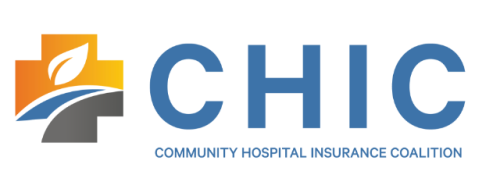Health Care Spending Returned to Pre-pandemic Levels in 2021
DOL Issues New Model FMLA Poster
Prescription Drug Report Is Due by June 1, 2023
End of COVID-19 National Emergency Impacts Health Plan Deadlines
Health Care Spending Returned to Pre-pandemic Levels in 2021
A new study conducted by the Health Care Cost Institute revealed that health care spending bounced back in 2021, following a large drop in spending during the beginning of the COVID-19 pandemic. The study focused on data for health care spending and utilization and average prices for individuals under the age of 65 who receive health insurance coverage through an employer.
Based on the study, spending per person increased significantly from 2017 to 2021, from $5,334 to $6,467, respectively. That marks an increase of just over 21%. Most of the spending was driven by price increases. Between 2017 and 2020, prices experienced an annual growth rate of about 4%. However, in 2021, the growth rate was only 2%, indicating a shift toward utilizing lower-cost services like preventive care.
Consider these additional key findings:
- The average out-of-pocket spending increased to $825 per person from $725 in 2020.
- Individual health care spending increased by 15% in 2021, following a 3.5% decrease in 2020. 2020 marked the first year of the COVID-19 pandemic.
- Inflation accounted for $108 (7%) of the spending change while rising prices accounted for $915 (56%) from 2017 to 2021.
- Utilization rose 13% from 2020 to 2021, following a 7.5% decline in 2020. Use increased in all service categories (e.g., inpatient, outpatient, professional services and prescription drugs) in 2021.
- Spending increased in 2021 for several services associated with COVID-19, including respiratory hospital admissions, lab tests and vaccines.
Employer Takeaways
Inflation and prices for goods contributed positively to the change in spending per person in this study. Spending actually decreased among employer-sponsored plans in some areas. For example, the study noticed a shift to more utilization of generic drugs. Those factors, and the drop in utilization during the pandemic, resulted in 2020 being the only year that saw a drop in spending.
As health care spending returns to pre-pandemic levels, employers are uniquely positioned to help employees understand and utilize their health plans. A better understanding may help employees increase their health care literacy. Employers should continue to monitor health care trends, utilization and spending. Contact us today for more information.
DOL Issues New Model FMLA Poster
Prescription Drug Report Is Due by June 1, 2023
The deadline for health plans and health insurance issuers to submit their second prescription drug data collection (RxDC) report is June 1, 2023.
RxDC reports must be submitted through an online portal maintained by the Centers for Medicare and Medicaid Services. The agency’s RxDC website provides updated reporting instructions and other reporting resources. The first RxDC report was due by Dec. 27, 2022 (covering data for 2020 and 2021); however, federal agencies provided a submission grace period through Jan. 31, 2023. The second RxDC report is due by June 1, 2023, and must include data for 2022.
Health plans may use a third party—such as an issuer, TPA or PBM—to prepare and submit the RxDC report on their behalf. To do this, a plan must enter into a written agreement with the third party to address this reporting responsibility. Health plans are not prohibited from submitting RxDC reports on their own, but it is expected that most employers will rely on third parties to prepare and submit the reports.
End of COVID-19 National Emergency Impacts Health Plan Deadlines
On April 10, 2023, President Joe Biden signed a resolution ending the COVID-19 national emergency. The Biden administration had previously announced a May 11, 2023, end date to both the COVID-19 national emergency and public health emergency (PHE). The PHE is still scheduled to end May 11, 2023.
Various employee benefit plan deadlines have been extended by disregarding an “outbreak period.” The outbreak period continues until 60 days after the end of the national emergency (or such other date as announced by the federal government).
Deadline extensions that apply during the outbreak period include the following:
- HIPAA Special Enrollment—The 30-day period (or 60-day period, if applicable) to request special enrollment.
- Claims and Appeals—The deadline to file a benefits claim, file an appeal of an adverse benefit determination or request an external review under the plan’s claims and appeals procedures.
- COBRA Notices and Premiums—The period for qualified beneficiaries to elect COBRA coverage and make COBRA premium payments, as well as the date for individuals to notify the plan of a qualifying event or disability determination.
In a set of FAQs from March 29, 2023, federal agencies announced that the outbreak period will end on July 10, 2023 (60 days after May 11, 2023). Federal agencies have not adjusted this date for the early end to the national emergency.
Once the outbreak period ends, health plans can return to their nonextended deadlines. When the PHE ends, health plans will no longer be required to cover COVID-19 diagnostic tests and related services without cost sharing. Health plans will still be required to cover recommended preventive services, including COVID-19 immunizations, without cost sharing, but this coverage requirement will be limited to in-network providers.


